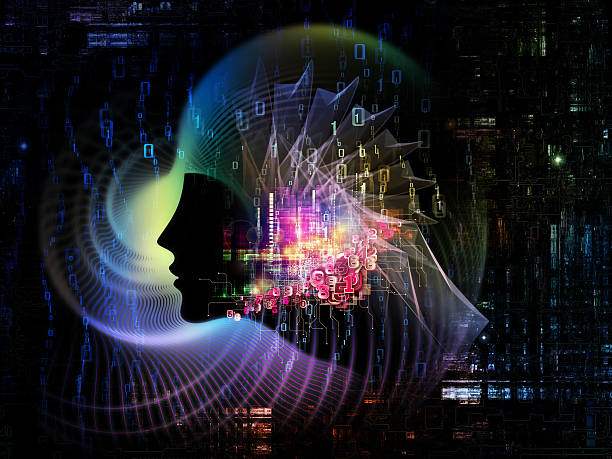What is Artificial Intelligence and How Does it Work?

Artificial Intelligence (AI) is a branch of computer science that deals with building machines capable of performing tasks that typically require human intelligence.
These tasks include learning, reasoning, problem-solving, perception, and linguistics.
AI strives to create systems that can think, learn, and make decisions like humans.
At the core of AI are algorithms and mathematical models that allow machines to learn from data and recognize patterns.
These algorithms can be designed manually or developed automatically through machine learning processes.
#Machine_learning, one of the most important sub-branches of AI, allows machines to learn from data without explicit programming.
This learning is done through algorithms such as neural networks, support vector machines (SVM), and decision trees.
#Neural_networks, by mimicking the structure of the human brain, are capable of processing complex information and learning nonlinear patterns.
In this way, AI can be used in various fields such as face recognition, language translation, and self-driving.
For a better understanding of machine learning, you can refer to this article about machine learning.
Another important aspect of AI is the ability to reason and solve problems.
AI systems can use search and planning algorithms to find solutions to complex problems.
This ability is particularly useful in fields such as game development, robotics, and optimization.
For example, a robot can use AI to find the optimal path to move in a complex environment.
Finally, AI aims to develop systems capable of understanding and interacting with the world around them, by developing systems that can process and respond to sensory information.
This includes computer vision, natural language processing, and speech recognition.
AI is constantly evolving and has the potential to create fundamental changes in many aspects of our lives.
Did you know that your company’s website is the first point of contact for 75% of potential customers?
Your website is the face of your brand. With **Rasaweb’s** corporate website design services, create an online presence that earns customer trust.
✅ Create a professional and lasting image of your brand
✅ Attract target customers and increase online credibility
⚡ Get free consultation from **Rasaweb** experts!
Types of Artificial Intelligence – From Narrow AI to General AI
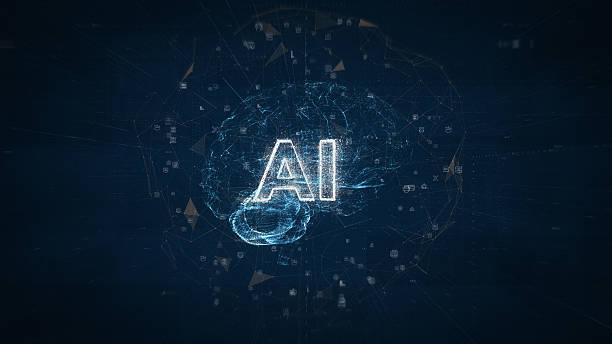
AI can be classified into different types based on their capabilities and applications.
One of the most common classifications divides AI into Narrow AI, General AI, and Super AI.
Narrow AI, also known as weak AI, is a type of AI designed to perform a specific task.
This type of AI is used in various fields such as face recognition, language translation, and game development.
Common examples of Narrow AI include voice assistants like Siri and Alexa, movie and music recommendation systems, and fraud detection systems in banking.
These systems perform very well in their specific tasks, but cannot function outside of these tasks.
For example, a facial recognition system cannot write an email or solve a math problem.
General AI, also known as strong AI, is a type of AI that has the ability to perform any task that a human can perform.
This type of AI is still in the research stages, and no General AI system has been fully developed yet.
The goal of developing General AI is to create machines that can think, learn, and make decisions like humans.
These machines can be used in various fields such as medicine, engineering, and science.
For more information on the difference between Narrow AI and General AI, you can refer to this article.
Super AI is a type of AI that surpasses human intelligence.
This type of AI is still hypothetical and its existence is not certain.
Some scientists believe that Super AI could lead to solving complex problems and major scientific advances, while others are concerned about its potential dangers.
For example, a Super AI might be able to make decisions that are harmful to humans.
Currently, most existing AI systems are of the Narrow AI type.
However, research in the field of General AI and Super AI is constantly advancing, and we may see the emergence of this type of AI in the near future.
Applications of Artificial Intelligence in Everyday Life and Various Industries
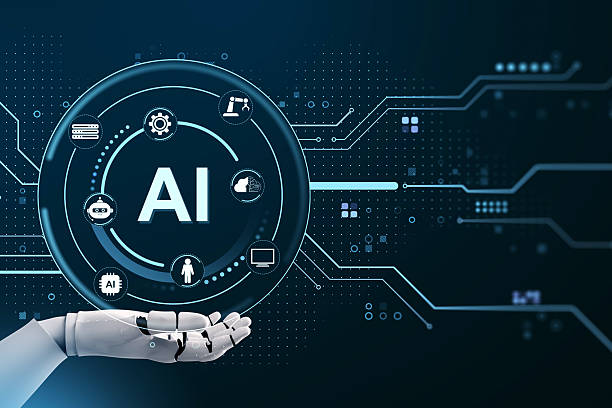
AI is rapidly penetrating various aspects of everyday life and different industries.
From improving customer service to advancements in medicine and manufacturing, AI is changing the way things are done.
In everyday life, AI exists in many of the devices and services we use.
Voice assistants like Siri and Alexa, movie and music recommendation systems on platforms like Netflix and Spotify, and language translation systems in Google Translate are examples of AI applications.
These systems, using #machine_learning algorithms, are able to understand our needs and preferences and help us access the information and services we are looking for.
For example, a movie recommendation system can suggest movies that we are likely to enjoy by analyzing our viewing history.
In the medical industry, AI is used in disease diagnosis, drug development, and improving patient care.
AI systems can analyze medical images with high accuracy and detect signs of diseases.
Also, AI can help in the process of discovering new drugs and reduce the time and cost of drug development.
For example, an AI system can identify drugs that are likely to be effective in treating a specific disease by analyzing genetic data.
For more information on the applications of AI in medicine, you can refer to this article.
In the manufacturing industry, AI is used in process automation, improving product quality, and reducing costs.
Robots equipped with AI can perform repetitive and dangerous tasks, and AI systems can identify problems and provide solutions to improve processes by analyzing production data.
For example, a robot can assemble parts of a product with high accuracy using AI.
AI also has wide applications in other fields such as transportation, education, and agriculture.
With the advancement of technology, it is expected that the applications of AI will increase in the future and its impact on our lives will be greater.
| Application | Description |
|---|---|
| Medicine | Disease diagnosis, drug development, improving care |
| Manufacturing | Process automation, improving quality, reducing costs |
| Transportation | Self-driving, traffic management |
Advantages and Disadvantages of Artificial Intelligence – Opportunities and Challenges

AI, like any other technology, has advantages and disadvantages that must be considered.
Understanding these advantages and disadvantages helps us use AI effectively and responsibly.
One of the biggest advantages of AI is increased productivity and efficiency.
AI systems can automatically perform repetitive and tedious tasks, allowing humans to focus on creative and strategic work.
For example, a robot can use AI to perform assembly tasks in a factory faster and more accurately than humans.
This increase in productivity can lead to reduced costs and increased profitability.
AI can also help improve decision-making.
AI systems can identify patterns and trends in large data sets that may not be visible to humans.
This information can help managers and decision-makers make better decisions and reduce risks.
For example, an AI system can predict the best time to launch a new product by analyzing market data.
However, AI also has disadvantages.
One of the biggest concerns is job losses due to automation.
With the advancement of AI, many of the tasks that were previously performed by humans are now performed by machines.
This can lead to increased unemployment and economic inequality.
For example, taxi drivers may lose their jobs with the advent of self-driving cars.
For more information on the impact of AI on employment, you can refer to this article.
Another concern is the ethical issues related to AI.
AI systems can make decisions that have serious impacts on people’s lives.
For example, an AI system used to select people for employment may unintentionally be discriminatory.
Therefore, it is necessary to develop laws and regulations to ensure the responsible use of AI.
Finally, AI can be very expensive.
Developing and implementing AI systems requires significant investments in research and development, hardware, and software.
This can be challenging for small and medium-sized companies.
Are you tired of your company’s website not being seen as it should and losing potential customers? Solve this problem forever with professional and effective website design by Rasaweb!
✅ Increase brand credibility and build customer trust
✅ Attract targeted sales leads
⚡ Contact us now for a free consultation!
Machine Learning – The Beating Heart of Artificial Intelligence

Machine Learning (ML) is known as the beating heart of Artificial Intelligence (AI).
Machine learning allows machines to learn from data and improve their performance without explicit programming.
In traditional programming methods, the programmer must explicitly define all the rules and instructions for the machine.
But in machine learning, the machine uses algorithms and mathematical models to identify patterns and relationships in the data and makes decisions based on them.
This allows machines to perform well even in new and unfamiliar situations.
There are different types of machine learning algorithms, each suitable for a particular type of problem.
Some of the most common types of machine learning include Supervised Learning, Unsupervised Learning, and Reinforcement Learning.
In supervised learning, the machine is trained using labeled data.
Labeled data includes inputs and desired outputs.
By analyzing this data, the machine learns how to map inputs to desired outputs.
For example, a face recognition system is trained using labeled images (images in which the names of people are specified).
In unsupervised learning, the machine is trained using unlabeled data.
By analyzing this data, the machine identifies hidden patterns and structures.
For example, a customer clustering system identifies groups of customers who have similar purchasing behavior using customer purchase data.
In reinforcement learning, the machine learns by trial and error how to act in a particular environment to earn more reward.
The machine improves its performance by receiving positive or negative feedback.
For example, a gaming robot can learn how to play a game in the best way using reinforcement learning.
For more information on the types of machine learning algorithms, you can refer to this article.
Deep Neural Networks – Inspired by the Human Brain
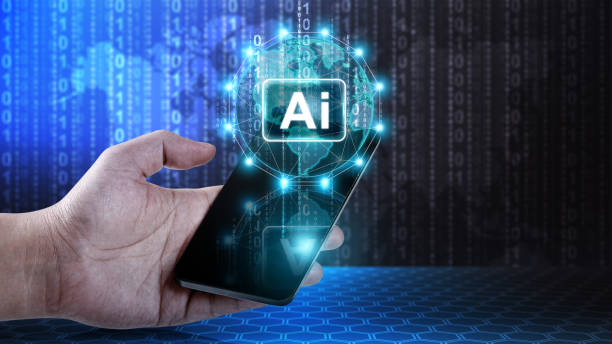
Deep Neural Networks (DNNs) are one of the most advanced and powerful machine learning algorithms.
Inspired by the structure of the human brain, these networks consist of multiple layers of interconnected nodes called neurons.
Each neuron in a deep neural network receives inputs from the neurons in the previous layer, processes them, and sends the output to the neurons in the next layer.
The middle layers of the network extract more complex features from the data.
The more layers there are, the more complex patterns the network can learn.
For this reason, these networks are called deep neural networks.
Deep neural networks are used in various fields such as computer vision, natural language processing, and speech recognition.
These networks have been able to achieve very good results in many of these fields.
For example, deep neural networks can recognize images with very high accuracy, translate texts into different languages, and recognize sounds.
One of the most important applications of deep neural networks is face recognition.
Face recognition systems can identify people’s faces in images and videos using deep neural networks.
These systems are used in various fields such as security, marketing, and social media.
For example, a face recognition system can be used to unlock smartphones.
Deep neural networks also have wide applications in natural language processing.
Language translation systems, emotion recognition in text, and question answering are among the applications of deep neural networks in this area.
For example, a language translation system can translate a text into another language using a deep neural network.
For more information on deep neural networks, you can refer to this article.
Natural Language Processing – Human-Machine Interaction Through Language
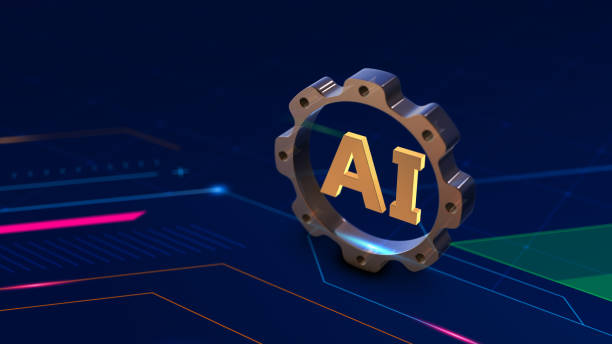
Natural Language Processing (NLP) is a branch of AI that enables machines to understand and generate human language.
The goal of natural language processing is to create systems that can communicate with humans naturally and through language.
Natural language processing includes a set of techniques and algorithms that are used to analyze and process text and speech.
These techniques include Syntax Analysis, Semantic Analysis, and Pragmatic Analysis.
Syntax analysis examines the grammatical structure of sentences.
This technique helps machines to identify the different components of a sentence and to understand the relationships between them.
For example, a syntax analysis system can identify the subject, verb, and object of a sentence.
Semantic analysis examines the meaning of words and sentences.
This technique helps machines to understand the meaning of a text.
For example, a semantic analysis system can determine what a particular word means in a sentence.
Pragmatic analysis examines the purpose and intent of the speaker or writer.
This technique helps machines to understand the true meaning of a message.
For example, a pragmatic analysis system can determine whether a sentence is a question or a command.
Natural language processing is used in various fields such as language translation, question answering, text summarization, and sentiment analysis.
Language translation systems can translate texts into different languages, question answering systems can answer users’ questions, text summarization systems can provide a summary of a long text, and sentiment analysis systems can detect the sentiments in a text.
| Technique | Description |
|---|---|
| Syntax Analysis | Examining the grammatical structure of sentences |
| Semantic Analysis | Examining the meaning of words and sentences |
| Pragmatic Analysis | Examining the purpose and intent of the speaker or writer |
The Future of Artificial Intelligence – What Should We Expect?

The future of AI is bright and full of potential.
With the advancement of technology, AI is expected to penetrate more fields and have a profound impact on our lives.
One of the most important trends in the future of AI is the development of General AI.
General AI can be used in various fields such as medicine, engineering, and science and can lead to solving complex problems and major scientific advances.
However, the development of General AI also comes with challenges.
One of these challenges is ensuring the safety and control of General AI.
It is necessary to develop laws and regulations to ensure the responsible use of General AI.
Another trend is the integration of AI with other technologies.
AI can be combined with technologies such as the Internet of Things (IoT), Augmented Reality (AR), and Virtual Reality (VR) to create new experiences for users.
For example, a smart home system can automatically adjust the temperature, lighting, and security of the home using AI and the Internet of Things.
AI can also play an important role in education.
Intelligent educational systems can provide personalized educational programs for students by analyzing their performance.
These systems can help students learn more effectively and reach their full potential.
With the advancement of AI, its impact on the labor market is also expected to increase.
Some jobs may be eliminated due to automation, while new jobs will be created that require new skills.
Therefore, it is necessary for people to prepare for their future careers and acquire the skills necessary to work with AI.
For more information on the future of AI, you can refer to this article.
Are you worried about losing customers because you don’t have a professional online store?
Forget these worries with online store design by Rasaweb!
✅ Significant increase in sales and conversion rate of visitors to customers
✅ Professional and user-friendly design that earns customer trust
⚡ Get a free consultation from Rasaweb
How to Learn Artificial Intelligence – Resources and Learning Paths

Learning AI can be an engaging and rewarding path.
Given the increasing importance of AI, learning this field can provide you with many job and personal opportunities.
One of the best ways to start learning AI is to participate in online courses.
Educational platforms such as Coursera, Udemy, and edX offer a variety of courses in the field of AI.
These courses are usually taught by university professors and industry experts, and their content is up-to-date and practical.
In addition to online courses, you can also use books and scientific articles to learn AI.
There are many books on AI that explain the basic and advanced concepts of this field.
Also, scientific articles can familiarize you with the latest research and advances in the field of AI.
Another effective way to learn AI is to do practical projects.
By doing practical projects, you can put theoretical concepts into practice and strengthen your skills.
You can choose projects that you are interested in and try to solve them using AI.
For example, you can build a face recognition system or a language translation system.
To learn AI, it is also necessary to strengthen your programming skills.
Programming languages such as Python and R are widely used in AI.
Python is known as the main programming language in AI due to its simplicity and having many libraries.
For more information on AI learning resources, you can refer to this article.
Ethical Challenges of Artificial Intelligence and Solutions to Deal with Them

AI, with all its potential, also brings important ethical challenges that need to be addressed and solutions provided to deal with them.
These challenges include discrimination, privacy, accountability, and security.
One of the biggest ethical challenges of AI is discrimination.
AI systems can be unintentionally discriminatory if trained on discriminatory data.
For example, a smart hiring system may unintentionally favor people of a particular gender or race if trained on discriminatory hiring data.
To address this challenge, training data needs to be carefully reviewed and any discrimination prevented.
Privacy is also another important ethical challenge of AI.
AI systems can collect and process a lot of data about people.
This data can be used for different purposes, but if not properly protected, it can lead to violations of people’s privacy.
To address this challenge, it is necessary to develop laws and regulations to protect people’s personal data and design AI systems in a way that respects people’s privacy.
Accountability is also an important challenge in AI.
If an AI system makes a mistake, who is responsible? Is the system developer responsible or the user? These questions do not have clear answers and more discussion and investigation is needed in this area.
To address this challenge, it is necessary to develop laws and regulations to determine liability for errors in AI systems.
Security is also an important challenge in AI.
AI systems can be attacked and hacked.
If an AI system is hacked, sensitive data may be stolen or the system may completely fail.
To address this challenge, AI systems need to be designed to be resistant to security attacks and data properly protected.
Frequently Asked Questions
| Question | Answer |
|---|---|
| What is Artificial Intelligence? | It is a simulation of human intelligence in machines programmed to think like humans and mimic their actions. |
| What are the main branches of Artificial Intelligence? | These include machine learning, deep learning, natural language processing, computer vision, and robotics. |
| What is Machine Learning? | It is a branch of artificial intelligence that focuses on enabling systems to learn from data and identify patterns without explicit programming. |
| Give examples of AI applications in our daily lives. | Voice assistants (such as Siri and Alexa), recommendation systems in Netflix and Amazon, self-driving cars, and facial recognition software. |
| What is Deep Learning? | It is a subset of machine learning that uses artificial neural networks with multiple (deep) layers to process large amounts of data. |
| What is Natural Language Processing (NLP)? | It is a branch of artificial intelligence that focuses on enabling computers to understand, interpret, and generate human language. |
| What are some of the ethical concerns related to AI? | These include data bias, privacy, job loss, and liability in case of errors. |
| What are the main benefits of AI? | Increased efficiency, improved decision-making, automation of repetitive tasks, and discovery of complex patterns in data. |
| How is AI used in the field of healthcare? | In diagnosing diseases, discovering drugs, analyzing medical images, and providing personalized patient care. |
| How do you see the future of AI? | It is expected to continue to evolve at a rapid pace, affecting all aspects of human life, from industry to education and entertainment. |
And other services of Rasa Web Advertising Agency in the field of advertising
Smart Brand Identity: Professional optimization for analyzing customer behavior using SEO-driven content strategy.
Smart Data Analysis: An effective tool to attract customers with the help of marketing automation.
Smart UI/UX: A fast and efficient solution to improve SEO ranking with a focus on marketing automation.
Smart Google Ads: A professional approach to increase website visits with a focus on optimizing key pages.
Smart Digital Advertising: A combination of creativity and technology to increase click-through rates by managing Google Ads.
And more than hundreds of other services in the field of internet advertising, advertising consulting and organizational solutions
Internet Advertising | Advertising Strategy | Advertorial
Resources
What is Artificial Intelligence?
,Everything About Artificial Intelligence (AI)
,Artificial Intelligence on Wikipedia
,What is Artificial Intelligence (AI)? Applications, Types and History
? Are you ready to transform your business in the digital world? Rasa Web Afarin Digital Marketing Agency, with its expertise in professional website design and SEO, offers innovative solutions for your growth and visibility.
📍 Tehran, Mirdamad Street, next to the Central Bank, Kazerun South Alley, Ramin Alley No. 6
“`




